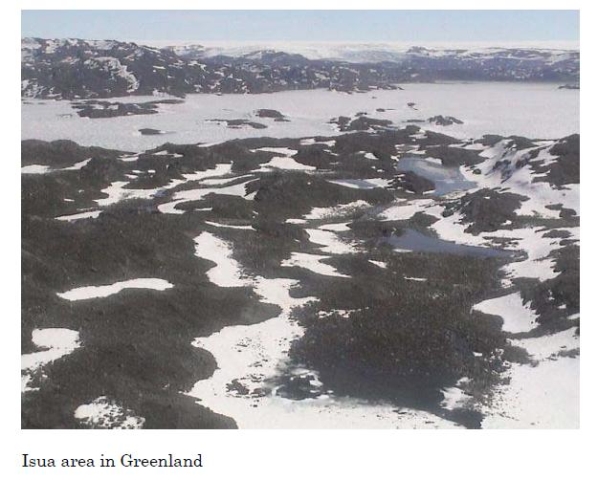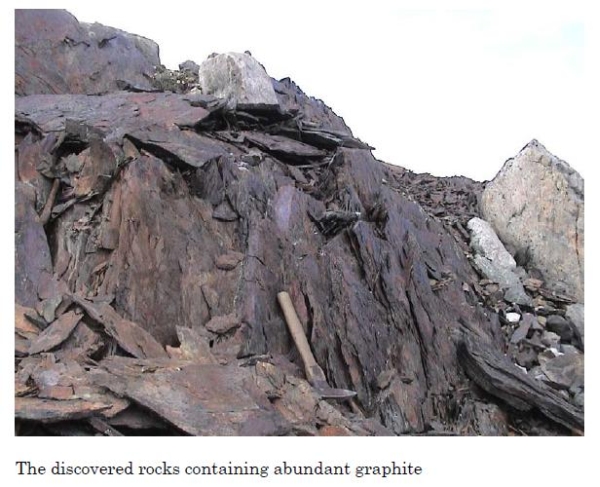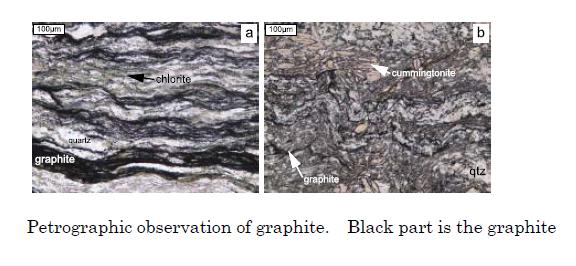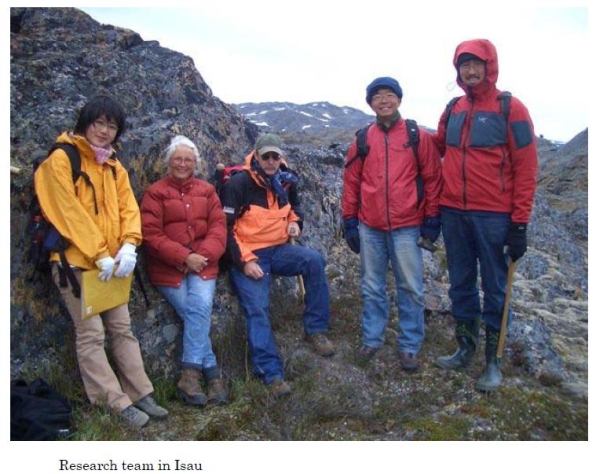NEWS
[Press Release]Traces of early life discovered in 3.8 Ga metasediment rocks of Greenland: when the first life started on the early Earth
Geologists at Tohoku University discovered traces of the oldest life, which have already flourished in 3.8 Ga ocean, in rocks from Greenland. The study was done with a collaborator at Copenhagen University. This study provides time constrain on the course of biological evolution. The paper is published on Nature Geoscience on line.
The world oldest rocks, which age is ca.3.8 Ga, are preserved at the Isua district in Greenland. Those rocks are precious "time capsules" informing us the old days of the Earth. There exists vigorous arguments among scientists if evidence of life activities was preserved in those old rocks. Prof. Takeshi Kakegawa and Dr. Yoko Ohtomo (former graduate student at Tohoku University) surveyed northwestern part of Isua with Prof. Minik Rosing at Copenhagen University. First, they discovered new outcrops of 3.8 Ga marine sediments, containing abundant carbon (graphite). Such discovery is extremely rare in past studies at Isua, because most rocks become un-identifiable phases by thermal and pressurized geological processes. The research group performed detailed analyses on graphite in their discovered rocks. Micro-scale carbon isotope and laser-Raman spectroscopic analyses on the graphite indicate that source of the carbon was biogenic organic matter and carbon was trapped in marine sediment at 3.8 Ga. Nano-scale structures of the same graphite was observed using high resolution transmitted electron microscope. The morphology of graphite crystals and layering patterns of carbon were consistent with the nature of graphitized biogenic organic matter. Therefore, we concluded that graphite in the discovered rocks are fragments of the oldest life, most likely marine single-cell microbial life form. The research method of the present study may be applicable to identify ancient life activities in rock from Mars or meteorites.
[Title of paper]
• Evidence for biogenic graphite in early Archaean Isua metasedimentary rocks
[Authors]
• Yoko Ohtomo1, Takeshi Kakegawa1 , Akizumi Ishida1, Toshiro
Nagase1 & Minik T. Rosing2
• 1:Graduate School of Science, Tohoku University, Japan.
• 2:Nordic Center for Earth Evolution, Natural History Muse of Denmark, University of Copenhagen, Denmark.
[Published Journal]
• Advance Online Publication (AOP) on Nature Geoscience's (December8,2013) 10.1038/ngeo2025
[Contact]
Professor Takeshi Kakegawa
Graduate School of Science, Tohoku University
Tel and fax:+81-22-795-6660
E-mail:kakegawa*m.tohoku.ac.jp (Replace * with @)




Posted on:December 9, 2013




